Index


Review: Silent cooler, serious gaming
Pardon us for starting our review with a marketing slogan but it does a great job in describing Sapphire’s HD 7870 GHz OC Edition graphics card. The slogan says:

After an army-clear introduction, we’ll list a few details that work in the slogan’s favor. Radeon HD 7870 is a performance segment graphics card that uses Pitcairn XT GPU. This GPU runs at standard 1GHz although Sapphire threw in a 50MHz overclock. The GPU measures 212mm square and packs 2.8 billion transistors made in 28nm. So, we’re talking about AMD’s new generation of GPUs that belong to the Southern Islands series with Graphics Core Next architecture. Pitcairn GPU has 20 Compute Units, resulting in 1280 (1D) Shader units, 32 Raster Operation units (ROPs) and 80 texture units on a 256-bit memory interface.
HD 7870 packs 2GB of GDDR5 memory running at 1200MHz but Sapphire overclocked its card to 1250MHz. In short, the 7800 series should bring about 30 percent better performance than HD 6800 series.
What is of special interest to us here is the special cooling which, apart from the overclock, should attract users. Of course, the cooler should provide superior cooling even under big loads. We’re talking about the cooler used by Sapphire dual-extractor technology Dual-X. In other words, the cooler uses two silent fans and a sophisticated heatpipe system made of two 8mm and two 6mm heatpipes.
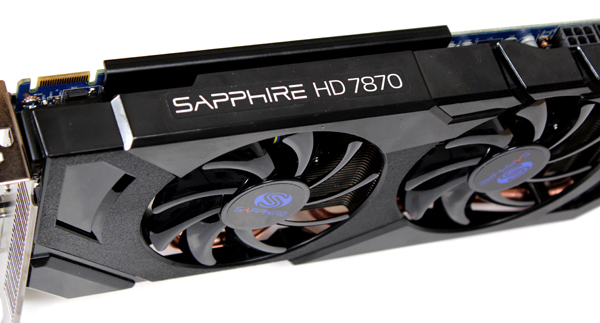
As usual, Sapphire’s virtual girl is there to spice things up. The cooler has two fans so there was no room for pictures on the card, but the box does look pretty.
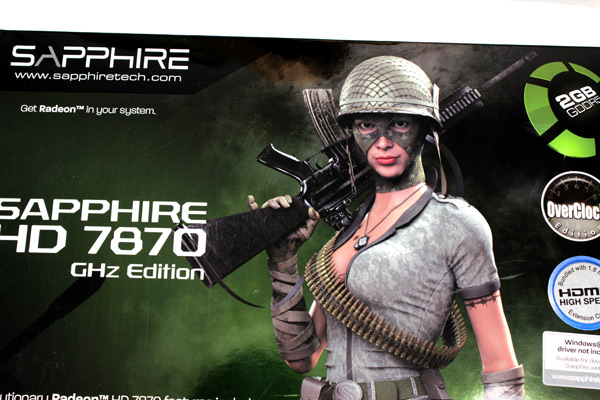
Sapphire u ponudi ima dvije HD 7870 GHz Edition cards and if you’re looking for the faster one, you should look for the one with OC moniker (OverClock Edition). Both cards come with identical cooling and the price difference is only €8. The OC edition goes for €316 while the “plain” GHz version goes for €308.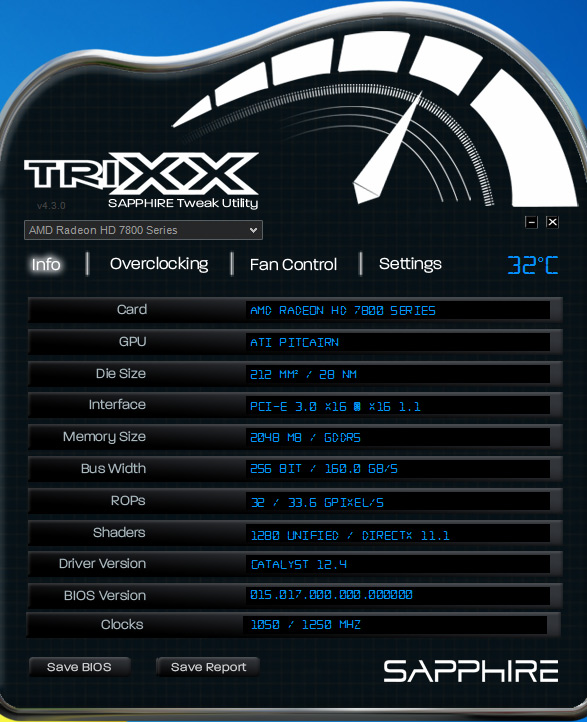
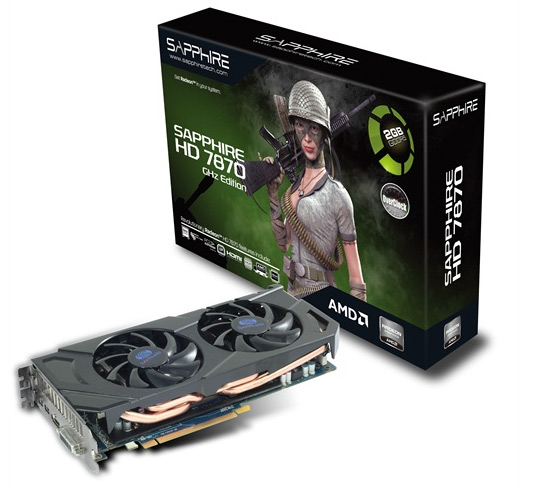
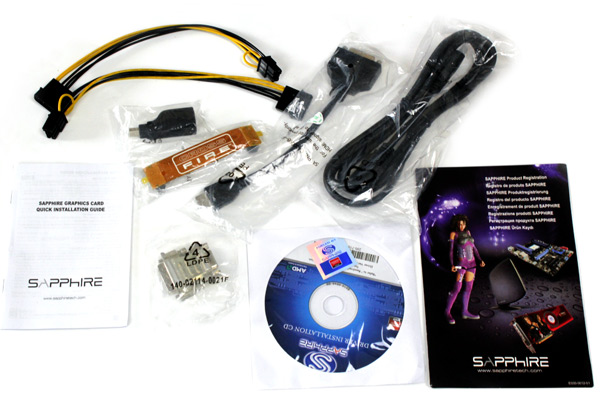
You will receive:
Graphics card
Driver CD + Documentation + Product Registration ID
Analog VGA Adapter
mini-DisplayPort-to-DisplayPort Adapter
HDMI-to-DVI Adapter
HDMI cable (1.8m)
CrossFire Bridge
PCI-E power cable x2
Sapphire HD 7870 GHz Edition (OverClock Edition) is a dual slot graphics card that’s 25.4cm long. Sapphire used a blue PCB that’s typical of Sapphire but is still based on the reference design. The PCB itself is 24cm long but the cooler is slightly longer as you can see from the picture below.
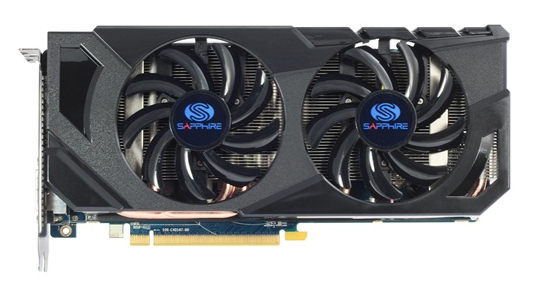
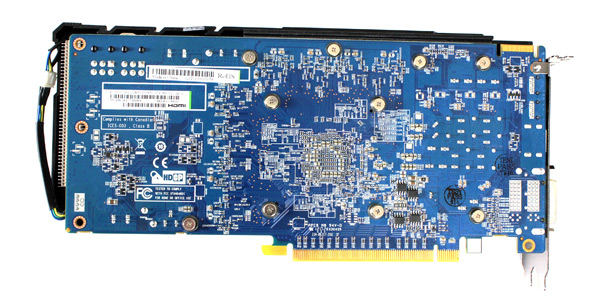
It is interesting to see heatpipes on the bottom rather than at the top of the card. We presume that this improved dissipation since the aluminum heatsink goes almost to the top of the card, where there’s more fresh air. Whether heatpipes go downward or upward is irrelevant as long as the cooler does its job as it should. The fans are 8.5cm in diameter and our testing revealed that they are quiet. Both fans are connected to a single 4-pin power connector and RPM regulation is automatic. Naturally, you can use any tool such as CCC Overdrive to do manual control.
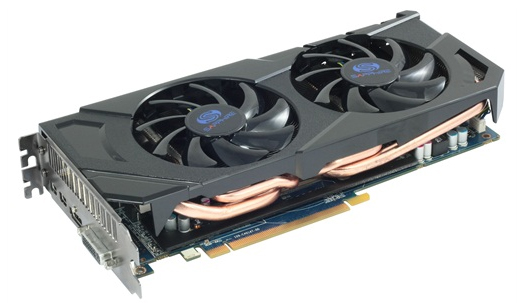
Lately we’ve seen increased use of 8mm pipes but 6mm ones are still considered standard for graphics. However, Sapphire combines thinner 6mm pipes in the middle of the heatsink with thicker 8mm pipes that must transfer heat to far edges of the heatsink.
The way heatpipes touch the heatsink is quite interesting. Heatpipes usually pass through heatsinks where they cannot be seen, but Dual-X’s heatpipes don’t fully enter the heatsink so we can see an entire side of the pipe. Contact pipes and aluminum fins on the heatsink are very tough and it seems as if the heatsink is better than the standard ones.
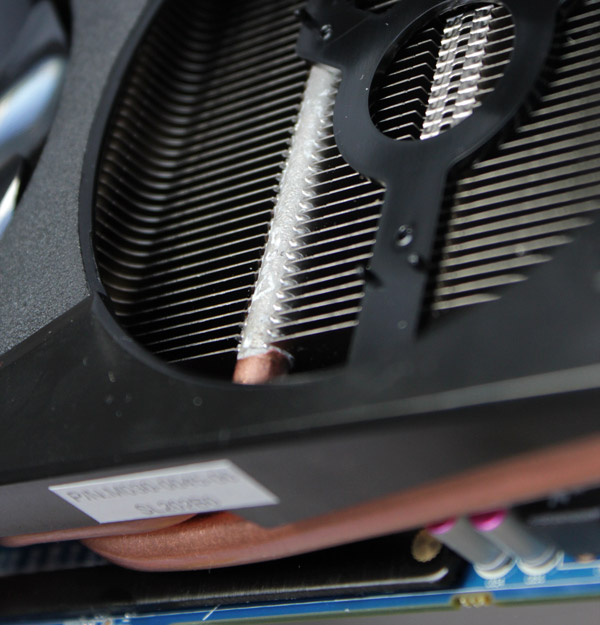
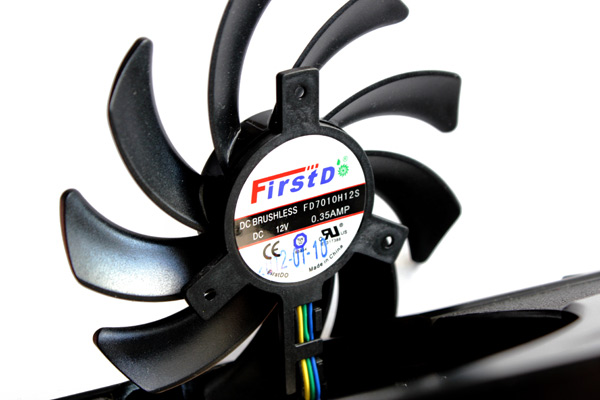
Quality cooling wouldn’t be complete without memory cooling. With that in mind, Dual-X cooler is equipped with special heatspreader that is curved on top of the card for better dissipation.
HD 7870 card features eight GDDR5 memory modules, each packing 256MB and totaling at 2048 on the card. A single 64-bit memory controller holds two memory chips, which means that HD 7870 has a 256-bit memory interface.
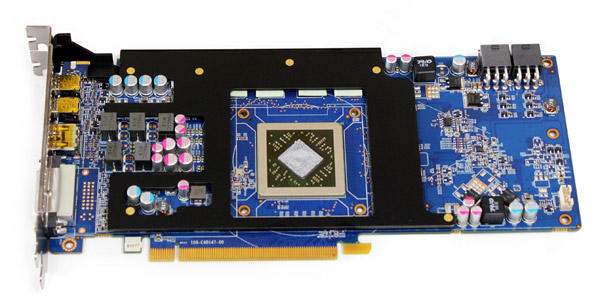
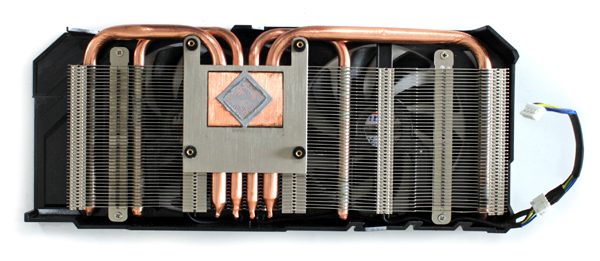
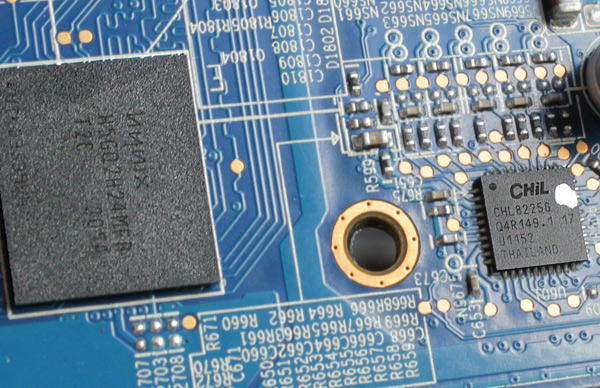
Some AMD partners decided on including an additional DVI out on HD 7870 cards but Sapphire stuck to the reference design with one dual-link DVI, two mini-DisplayPorts and a single standard HDMI out. However, Sapphire bundles a bunch of converters with the card – you get HDMI-to-DVI dongle, 1.8 meter long HDMI cable, mini-DisplayPort-to-DisplayPort dongle and one DVI-to-VGA dongle.
AMD’s HD 7000 series comes with support for multiple independent audio streams. HDMI 3D offers support for Deep Color, 7.1 High Bitrate Audio and 3D Stereoscopic. Doubling the effective bandwidth of previous DisplayPort implementations, DisplayPort 1.2 now includes support for Multi-Stream, allowing you to drive up to four separate monitors from a single DisplayPort 1.2 connector (requires DP1.2 monitors or Multi-Stream compatible hub), Stereoscopic 3D monitor support and adds support for high quality, lossless, 7.1 channel audio formats.
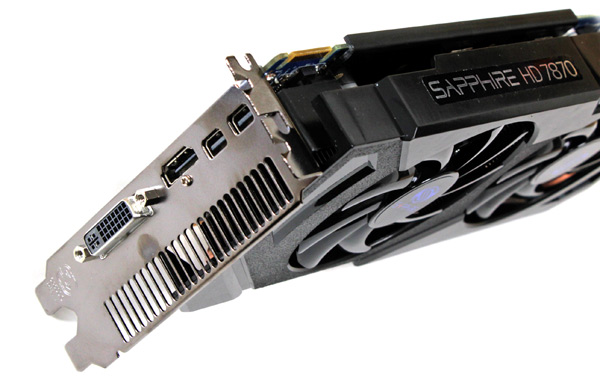
HD 7870 has a single Crossfire connector, meaning that an additional HD 7870 will help boost performance.
AMD’s reference card can draw up to 175W, but the two 6-pin connectors ensure that the card has 225W at its disposal. Although slightly overclocked, Sapphire’s card shouldn’t draw much more than the reference version.
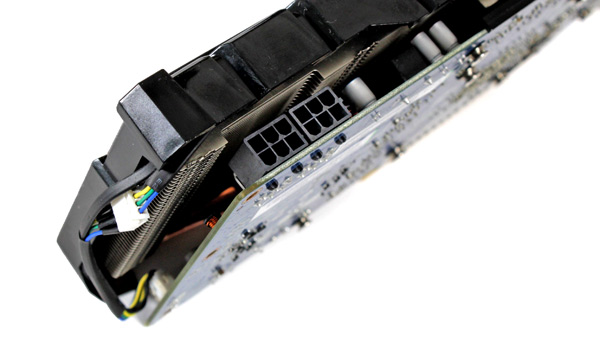
Motherboard: EVGA X79 FTW
CPU: Sandy Bridge-E Core i7 3820 (3.6GHz)
CPU Cooler: Thermalright HR-02 (Thermalright-Europa Distri www.PC-Cooling.de).
Memory: 8GB ADATA DDR3 1600 XPG Gaming series
Harddisk: OCZ Vertex 2 100 GB
Power Supply: CoolerMaster Silent Pro 1000W
Case: CoolerMaster Cosmos II Ultra Tower
Operating System: Win7 64-bit
Nvidia 301.10-desktop-win7-winvista-64bit-english-whql
12-4_vista_win7_64_dd_ccc.exe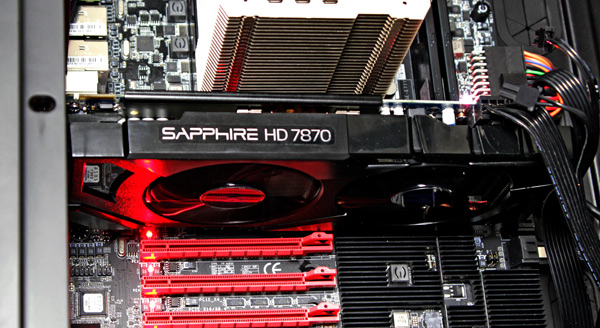
3DMark11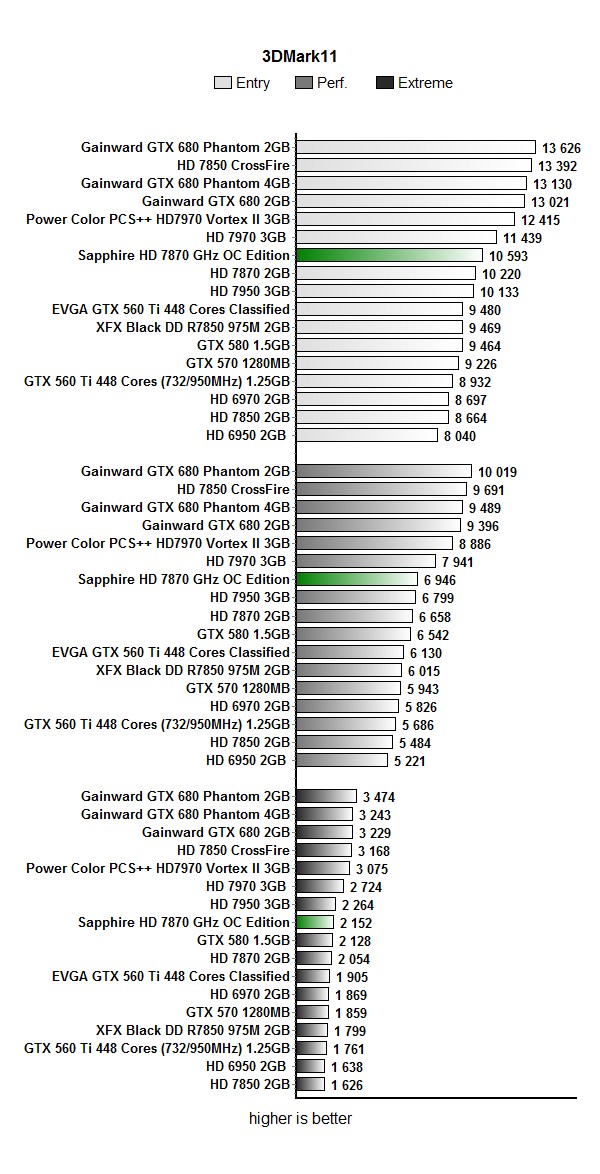
Crysis 2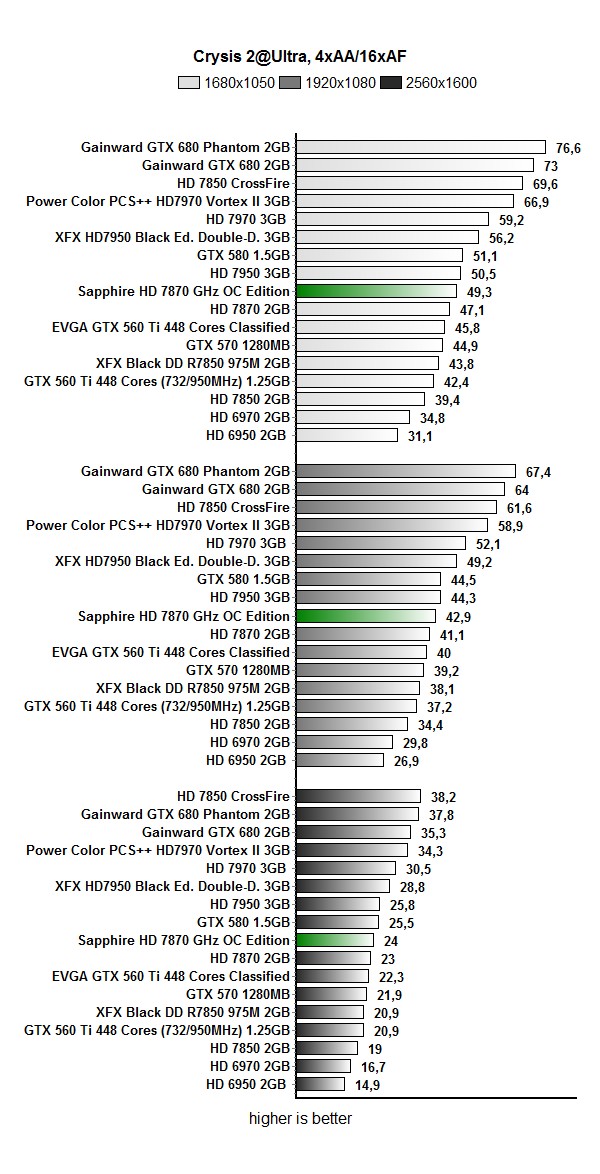
Aliens vs Predator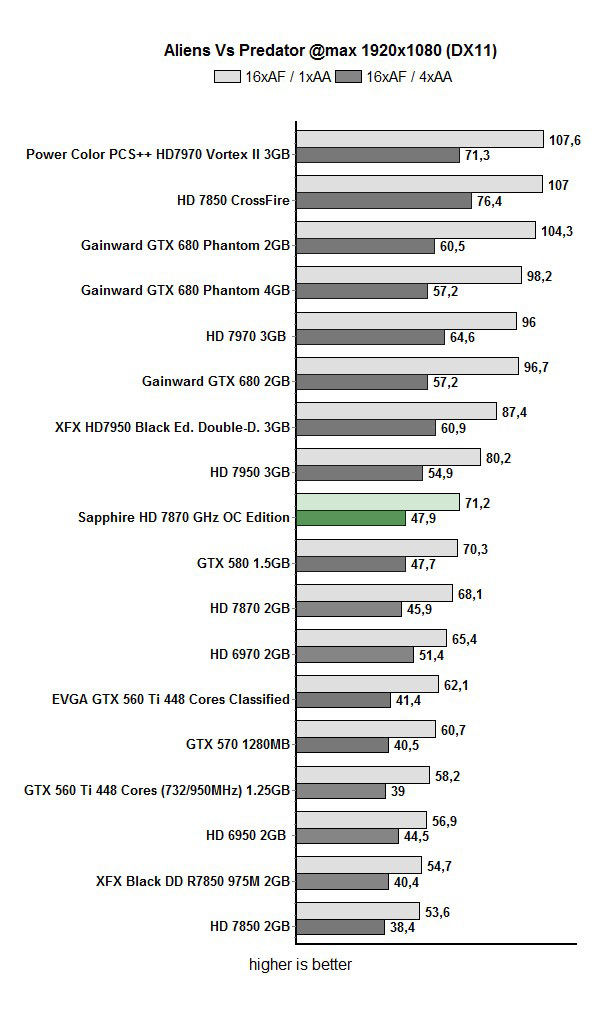
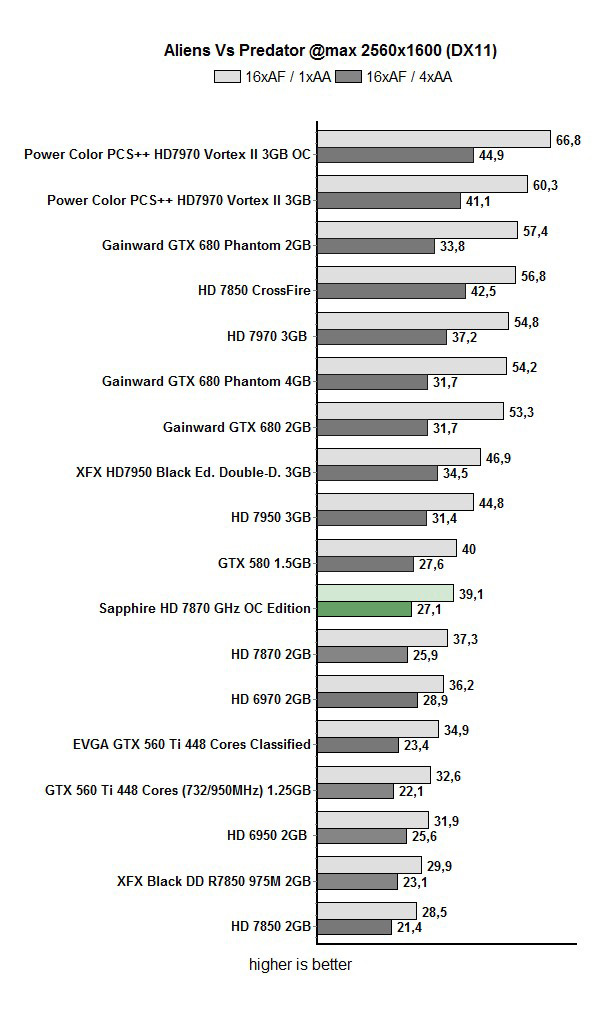
Metro 2033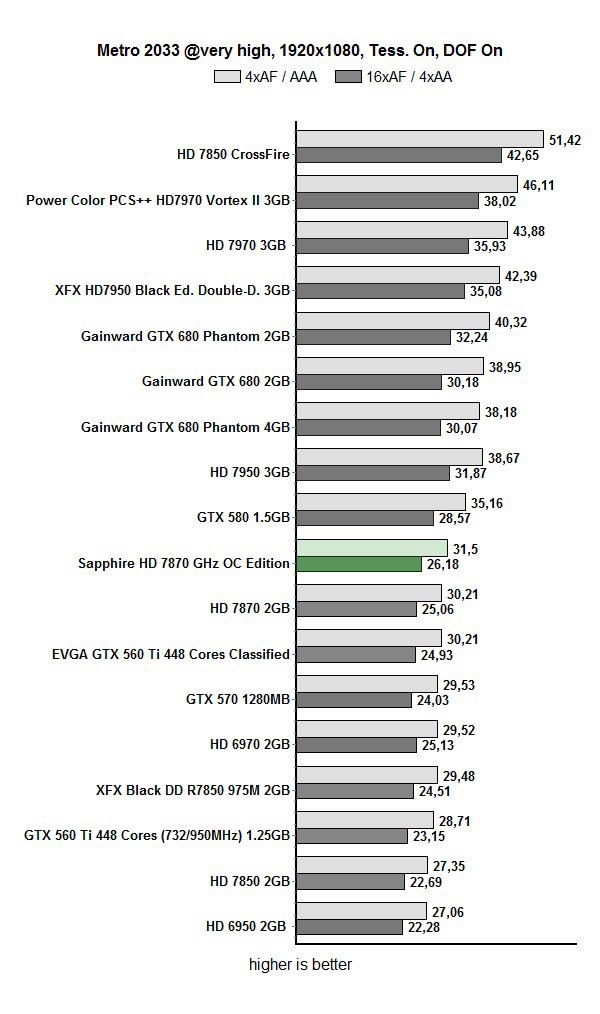
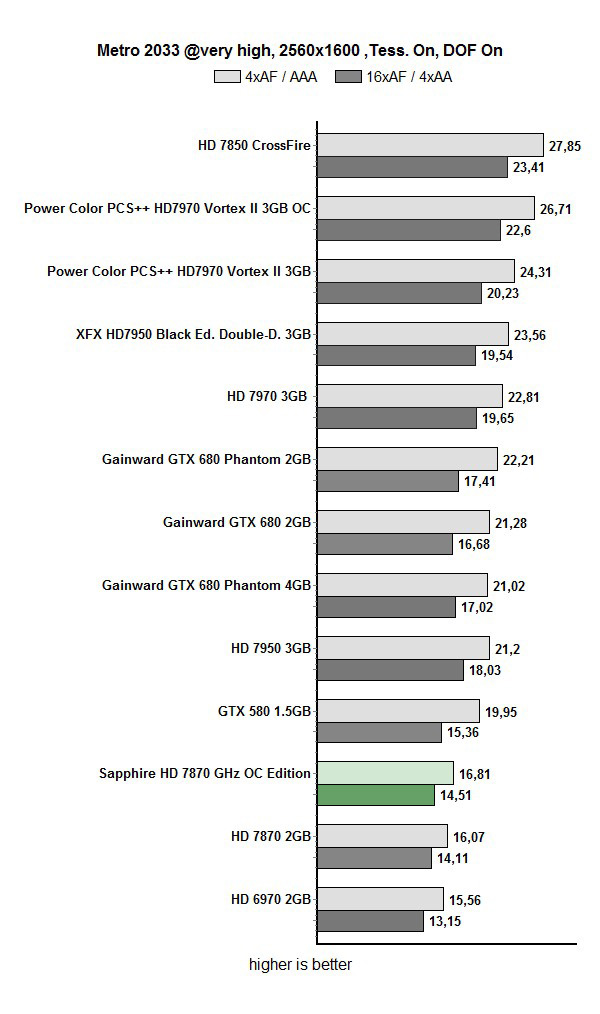
Tessellation: Unigine Heaven
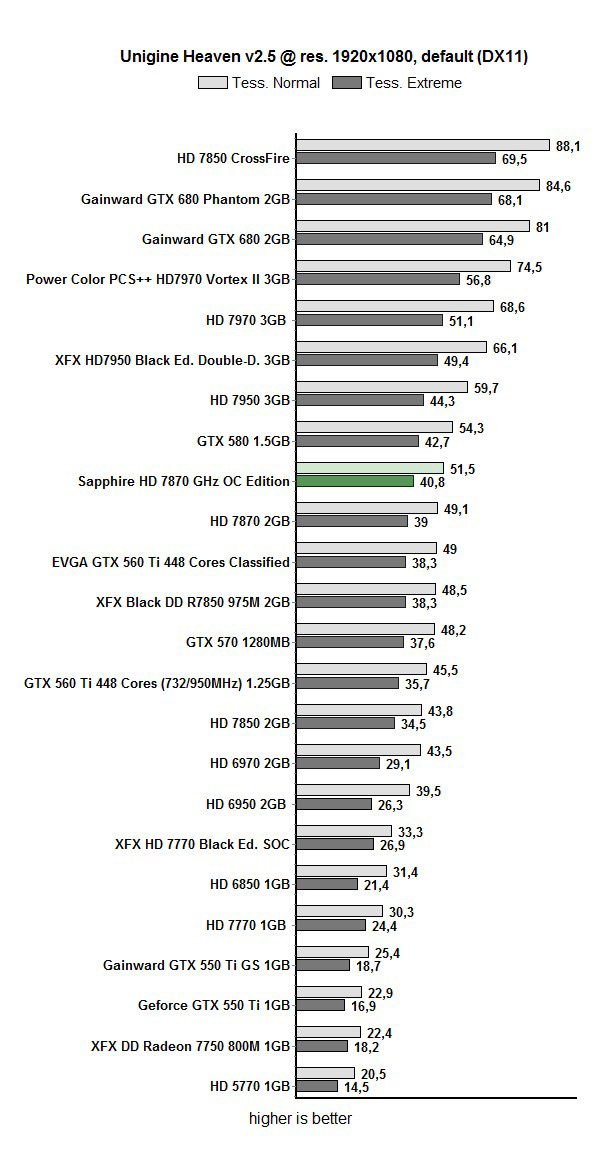
Overclocking
Sapphire HD 7870 GHz OC Edition comes factory overclocked. The GPU and memory run at 1050MHz/1250MHz respectively, whereas reference clocks are at 1000MHz/1200MHz. We managed to hit 1150MHz GPU and 1420MHz for the memory.

Thermals, Noise and Power Consumption
Sapphire HD 7870 GHz OC Edition’s cooling turned out great – it’s quiet and does its job well. The fans are barely audible in idle mode, which was not surprising considering the heatsink size and the fact that it’s cooled by two fans at the same time. However, the cooler’s true strength showed when we stressed the card. Temperatures climbed up to 62°C, when the fans were still pleasantly quiet so we didn’t even notice them. Temperatures were about 5°C lower than on the reference HD 7870 but Sapphire’s card was much quieter. Our additional overclock increased temperature by 6°C but the fan didn’t speed up much so the card was still unobtrusive.
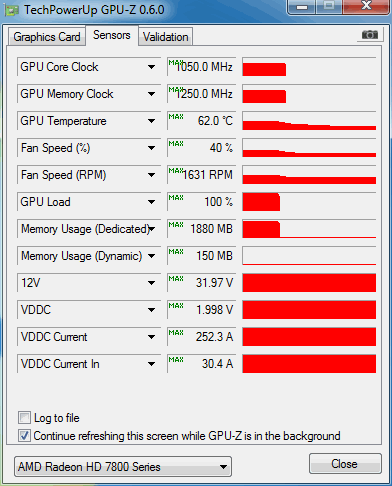
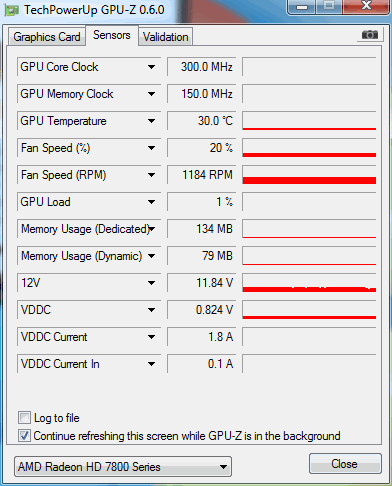

Sapphire launched its HD 7870 GHz OC Edition graphics card that’s aimed at serious gamers. Gaming at 1920x1080 is something that this card will chew up with ease while 2560x1600 will be playable in most games at highest settings. The HD 7870 card’s performance outweighs that of HD 6970. Since it comes with slightly higher clocks than the reference card, HD 7870 GHz OC Edition will provide slightly better performance as well.
The GPU runs at 1050MHz and we’re sure users prefer their cards cool while waging their “wars”. The Dual-extractor technology used by Sapphire is a formula that gives good results. Namely, although the card is overclocked, it still boasts lower temperatures than on the reference card. Furthermore, noise is an alien concept to this card and Sapphire’s HD 7870 GHz OC Edition remains quiet both when idle and when taken to the limit.
Sapphire HD 7870 GHz OC Edition goes for €316, which is about €30 steeper than the most affordable HD 7870, which again comes from Sapphire. Quality cooling and a factory overclock clearly show that Sapphire means business and the price difference between the reference card and Sapphire’s HD 7870 GHz OC Edition is a small price to pay for what you ultimately get – a cool and reliable companion.



